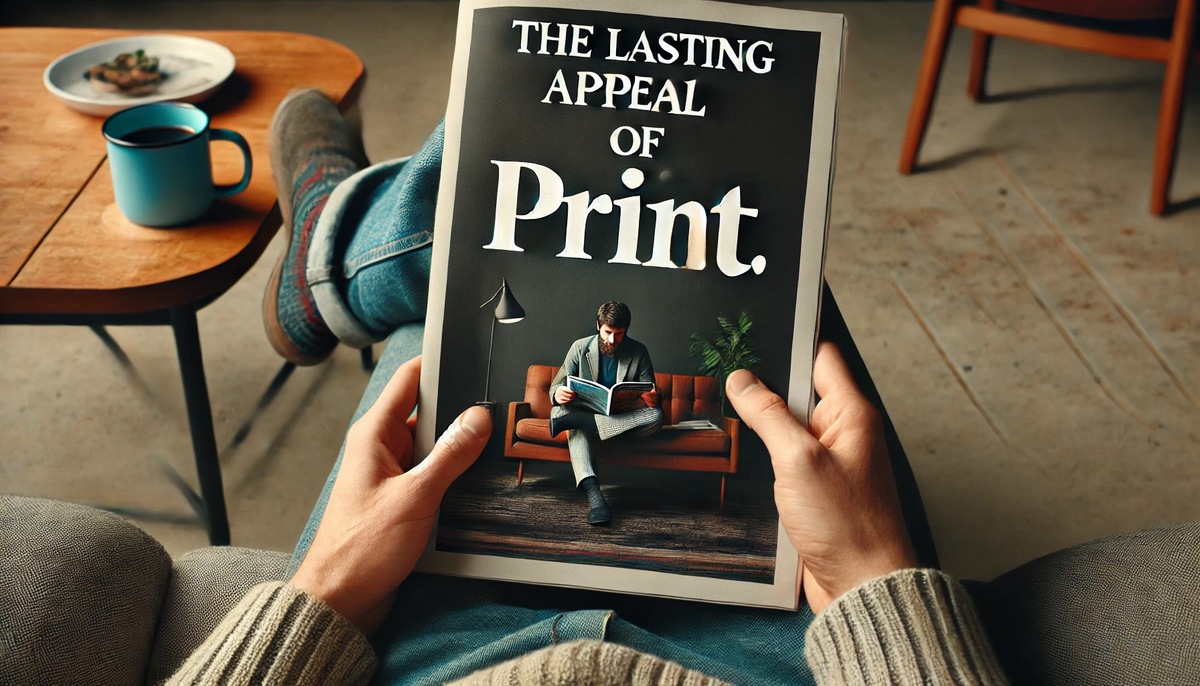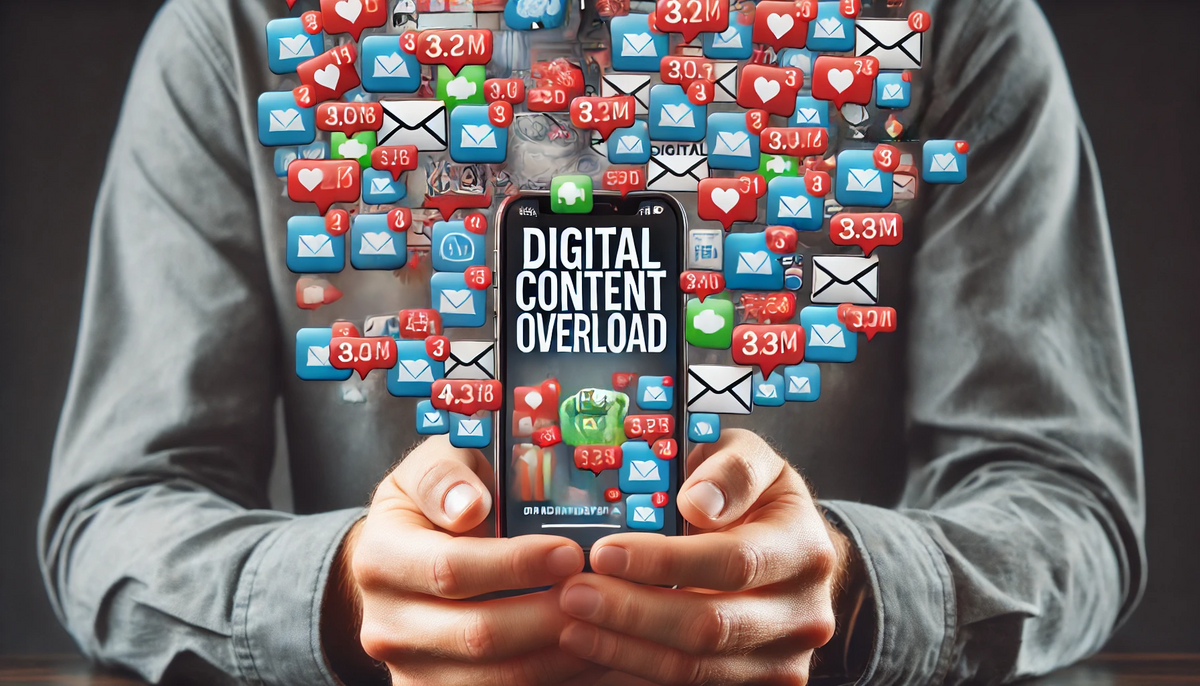
As magazines transition from print to digital, many encounter an unexpected challenge: declining readership. Yes, the digital world opens doors to instant access and wider distribution, the shift can create obstacles that alienate loyal readers and then, fail to engage new ones. Here’s a look at why digital editions of magazines often see a dip in readership, and what factors are driving this trend.

Inbox Overload: Getting Lost in the Digital Noise
One of the primary reasons digital magazines lose readership is due to the simple fact that digital notifications often get lost. Inboxes are constantly flooded with newsletters, promotional emails, and notifications from various subscriptions. Amidst this flood of content, a digital magazine alert can easily be missed or ignored.
Unlike a physical magazine, which sits on a coffee table or in a mailbox and serves as a visual reminder, digital editions depend heavily on a reader’s email or app notifications. With so many competing digital demands, even a loyal reader may overlook the latest issue. Without a tangible presence, digital magazines risk becoming out of sight and out of mind.
Screen Fatigue and the Desire for a Physical Experience
With most of our work and leisure activities shifting online, screen fatigue has become a widespread issue. Many readers enjoy print magazines as a way to take a break from screens. The tactile, immersive experience of reading a physical magazine simply can’t be replicated in digital form.
Physical magazines are enjoyable because they’re tangible, with thick pages, glossy covers, and beautiful layouts designed for leisurely reading. For some, the physical act of flipping through pages is a pleasure in itself. Digital editions, however, can feel less satisfying and more like “just another screen” to look at.
The Perception of Value: Digital as Less Tangible
There’s also the issue of perceived value. A physical magazine feels like a product that readers own – a curated collection of articles, images, and advertisements that can be displayed, saved, or passed along. Digital editions, however, can feel ephemeral. Some readers find it difficult to justify paying for digital content that feels less “real” than a print version, even if the price is lower.
Additionally, many online articles and content platforms are available for free, making it harder for readers to justify spending on digital magazines. The abundance of free online content dilutes the perceived value of paid digital editions, especially if the magazine doesn’t offer something truly unique.
User Experience Challenges on Digital Platforms
Many digital magazines also struggle to offer a smooth and enjoyable reading experience. Formats that work well in print don’t always translate effectively to screens, and reading a digital magazine can feel clunky or awkward. Text might be too small, images don’t always load crisply, and even page-flipping animations can feel unnatural.
Moreover, device compatibility is an ongoing challenge. Digital magazines may look fantastic on a tablet but fall short on smaller smartphone screens or desktop computers. If the user experience isn’t seamless, readers are likely to close the app or browser and never return.

Overabundance of Other Digital Content
The internet is filled with competing content, from blogs and social media to news apps and video streaming. A digital magazine competes not only with other magazines but with every other form of online media. Print magazines have the advantage of occupying a physical space that commands attention, while digital editions risk becoming just one among a sea of endless content choices.
Readers are already engaging with online articles, videos, and social feeds that often feel more dynamic and interactive than static magazine layouts. For a digital magazine to stand out, it has to offer something that can break through this “content clutter” – a difficult feat when readers are constantly distracted by clickable links, ads, and notifications.
Subscription Fatigue in the Digital Era
With so many digital subscription options, from streaming services to news sites and fitness apps, people are growing weary of managing and paying for multiple subscriptions. This phenomenon, often called “subscription fatigue,” means that even dedicated readers may avoid adding a digital magazine to their list of monthly costs.
In contrast, a physical magazine subscription is tangible, less likely to go unnoticed, and doesn’t carry the same sense of “another monthly charge.” For many, cutting back on digital subscriptions is a priority, and digital magazines often land on the chopping block as they compete with other subscription services offering more frequent or unique content.
Digital Advertising Isn’t Always a Substitute for Print Ads
Advertisers, too, have different expectations when it comes to digital magazines. The premium full-page ads that work well in print don’t always translate as effectively to digital platforms, where ad-blocking software and “banner blindness” are common. Readers often find digital ads intrusive or annoying, reducing their overall experience and further discouraging engagement.
While some publications attempt to use native advertising or sponsored content that integrates into the editorial experience, even these tactics can feel forced online. Print ads often feel like part of the magazine’s visual storytelling, whereas digital ads often disrupt the reader’s experience, leading to a decrease in perceived value for both readers and advertisers.
A Path Forward for Digital Magazines
For digital magazines to thrive, they must tackle these challenges head-on. Here are a few strategies that could help:
- Enhanced User Experience: Digital magazines should prioritise intuitive design, easy navigation, and device compatibility to create a smooth and enjoyable reading experience across all devices.
- Interactive and Multimedia Content: Embracing digital strengths by incorporating video, interactive infographics, and audio can set digital magazines apart from their print counterparts and other online content.
- Value-Driven Content: To compete with the abundance of free content, digital magazines must deliver unique, high-quality content that readers can’t easily find elsewhere.
- Strategic Notifications and Reminders: Instead of relying solely on email notifications, digital magazines could explore innovative ways to remind readers, such as push notifications, calendar reminders, or even personalised “time-to-read” alerts.
- Flexible Pricing Models: Digital magazines can offer a variety of subscription options, such as pay-per-issue, discounted annual plans, or packages with other services to make the commitment less daunting for readers.
In Summary
Digital magazines face unique challenges that don’t always apply to their print counterparts. From screen fatigue to competing content and subscription fatigue, many factors play into the drop in readership when a magazine goes digital. However, with strategic adjustments, digital magazines can appeal to modern readers by leveraging the very digital tools that initially created challenges.
For readers and advertisers alike, the value of digital magazines will come down to whether they can offer an experience that is as satisfying, engaging, and memorable as their print predecessors.






You must be logged in as a member to add comments.
Become a member
Already a member? Log in or create an account.